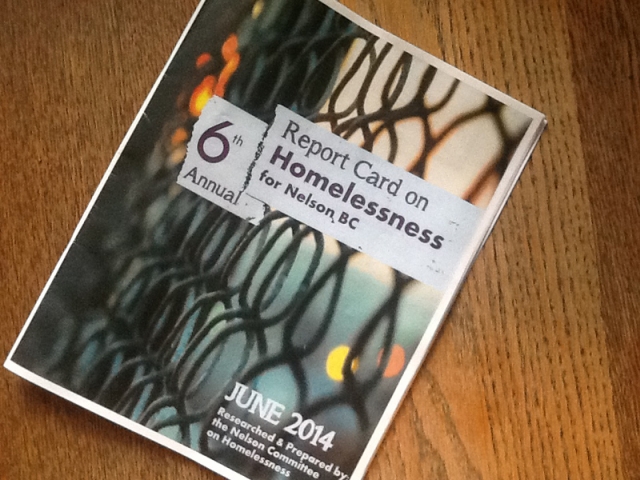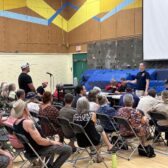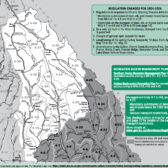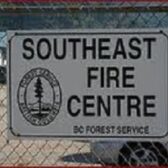2014 Homelessness Report Card: Emergency stays are down, need for food up
Food bank visits in Nelson continued to rise last year by 834 in Nelson to 20,596 and meals served at Our Daily Bread rose by 2,266 to 14,543.
“The reason that those visits are up is that people have to spend all their money on housing and there is not an adequate amount left for food,” said Phyllis Nash, co-chair of an all day workshop presented by the Nelson Committee on Homelessness (NCOH) on June 17.
Emergency housing stays fell slightly by 41 to 355 for the year, but the average length of stay was up by four days to 16 days.
These and other statistics were unveiled in the Sixth Annual Report Card on Homelessness presented at the meeting where representatives from local government, service organizations, landlords and the homeless put their heads together to find a solution for those in need.
The meeting featured Brad Crewson, co-ordinator of the Street to Homes program for Pacifica Housing in Victoria.
Crewson had some advice for the workshop.
“Collaboration,” he said. “Everyone, including the health authority, needs to be at the table with their cards on the table.
“And develop a relationship with the landlords. They are business people. They want to know that the rent will be on time and the tenants will not disturb others.”
Funding, who fixes what’s broken and who will mediate are key concerns for landlords, he told the group of about 50 people.
“Lack of affordability creates poverty,” he said.
Pacifica Housing provides over 800 units of quality rental housing in Victoria, Duncan and Nanaimo including some designated for people with disabilities. Crewson has spent the last seven years managing supported housing and programs for homeless individuals.
In Nelson, one in three households pay 30 percent or more of their income on shelter. One in five live below the low income measure threshold.
The median after tax income for lone parent families in Nelson is $29,612, while the after tax median for lone parents in all BC is $40,646, according to the report card.
The 2014 report card highlighted youth and seniors.
As far as shelter goes, there currently is not a local youth emergency shelter nor a safe home program in Nelson, the report card stated.
“Youth do end up homeless or relatively homeless roaming the streets, couch surfing or in situations where they are exploited.”
One of the ways Nelson is addressing this problem is the Nelson Youth Outreach program which assists local at-risk youth to re-connect with school, housing, family, supports and community.
The young, the impoverished, seniors and the mentally ill are particularly vulnerable said Nash, a retired social worker who volunteers with the NCOH and co-chaired the meeting with Cheryl Dowden.
One in two people who were homeless and stayed at Stepping Stones Emergency Shelter in 2013 were identified as having a mental illness.
The poverty rate among seniors is growing in spite of Old Age Security pension and a Guaranteed Income Supplement program. The federal government has changed the eligibility for these programs from age 65 to 67 years old.
“The reality is that those who do not have private pension plans and/or savings find the $1,272 a month is not enough to pay both rent and provide for the other basics of living in our current economic climate,” the report card said.
Nash said she was “heartened by the commitment of such a large number of people,” at the event.
But there is much work to do. NCOH has secured federal funding for five years at $118,000 per year, and the June 17 event was one step in the determining the effective use of that money.
“We have about 40 people a year here who camp out, but there are massive amounts of people who live in substandard housing,” said Nash.
The next step for the NCOH will be to collate the data collected at the workshop and put it into a plan for the federal and provincial governments.
But Crewson cautioned the group that “government is only going to do so much, and it’s going to get less.”
He said, “Communities need to look inside, to business, to faith, to social service providers and to the community and ask, what small difference can I make?
“It’s a myth that people want to be homeless. When you have skilled and compassionate people engaging them, generally speaking and given the time, they will respond.”



























